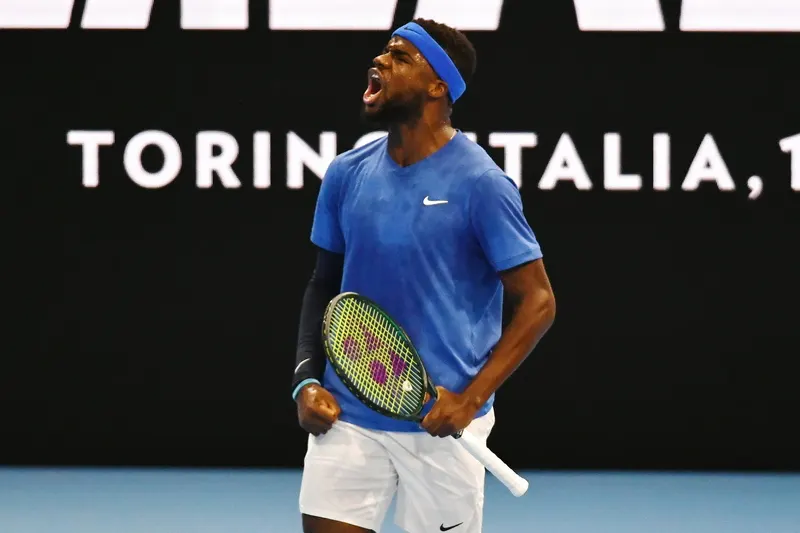
Frances Tiafoe just became the first American man to reach a Grand Slam semifinal since Isner in 2018 Wimbledon. His red hot summer continued when he clinched Team World’s first Laver Cup with a match tiebreak triumph over Team Europe’s Stefanos Tsitsipas.
I’d be remiss if I neglected to mention the man is undefeated in tiebreaks this summer, including the 10-point match tiebreak that put an end to Roger Federer’s illustrious career *sheds tear.* Of course, in the wake of his recent success, people are curious about Frances’ racquet.
Here’s Frances Tiafoe’s current racquet setup:
- Endorsed Racquet: Yonex VCore Pro 97 310g
- Actual Racquet: Yonex Vcore Pro 97 Duel G 310g
- Strings: Yonex PolyTour Pro 125 @ 46 pounds
What’s Under The Paint?
Frances played with a Wilson Blade 98 during his junior days and early time on the tour, but for most of his professional career he has been sponsored by the Japanese brand Yonex.
One of my friends in the tennis industry once said “Yonex makes amazing frames for 10% of the tennis population” meaning that if you know how to swing the racquet the right way, don’t sleep on Yonex.
They’ve quickly been gaining popularity on the pro tour and with juniors. Their respectable quality control and consistency when updating their product silos allows players to transition from one model frame to the next almost seamlessly as they update.
However, they still provide old retail models under new paint to their professional players. Frances is no exception. He sports the retro vibes of the Vcore Pro 97 paintjob and uses the old Yonex Vcore Duel G 97 under the paint.
While this stick is not what’s currently offered, it was a few product cycles ago, and the DNA of the line has not changed much in the last ten years or so.
How Frances Makes it His
The Duel G 97 is described as a comfortable, crisp, and spinny stick by many reviewers. It’s string pattern is 16×20 and is a bit unique in that it has shared holes where one big grommet hole serves as passage for a main AND a cross string at the same time.
Frances strings his racquet without the top cross string, so it’s 16×19 as he plays it. Leaving out the top cross decreases stringbed stiffness by a bit which should lead to a slightly more forgiving, powerful, and spin friendly playing experience.
Whether this is noticeable on impact or just something Frances does out of superstition I don’t know, but it’s interesting nonetheless.
Frances strings up his racquets with Yonex PolyTour Pro 125 at 42 pounds, though some sources mention he’s up around 46 or 48 pounds.
Reasonably, we can assume that he changes tensions based on weather conditions, altitude, speed of court, or just his preference for the day.
This is still a relatively low tension, but the 40s are becoming regular territory for professional players using polyester strings.
The Specs
Tiafoe’s unstrung racquet specs are 311g, 31.8 cm balance, and 302 swingweight. All of these specs were measured unstrung with an overgrip. So, strung up with a dampener we’re looking at about 330g, 32.8 cm balance, and 333 swingweight.
That’s relatively light. Combine the low mass, thin and control-oriented beam, and his western grip and the racquet doesn’t give Frances much. This may explain his preference for lower tensions—he might be looking for a little more pop out of his racquet.
Though Frances played the US Open and most of his other tournaments with the Duel G 97, he was spotted at Indian Wells 2022 with a blacked out Yonex frame.
This was most likely the newest iteration of the Vcore Pro 97, as the beam shape in the throat look the same as retail, and the shared holes are absent.
Frances did not stay with this frame and returned to his trusty Duel G which appears to have been a great move! Given his recent success, I doubt he changes a thing!
If you’re interested in other ATP players’ racquets, I listed all the top 100 players’ racquets in this post.
